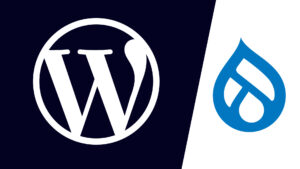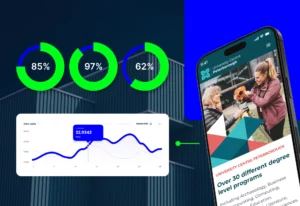Kentico vs WordPress: Detailed CMS Comparison
There’s a reason why many of the world’s biggest and most prominent websites run on WordPress.
But for enterprises weighing up content management systems, Kentico still makes the shortlist, and with good reason. It’s powerful, structured and comes with baked-in features that suit large-scale operations.
So how does it really stack up against WordPress, especially in its enterprise-grade form like WordPress VIP?
In this guide, we’ll dive deep into both platforms, covering what they do well, where they fall short and which one gives you the edge in performance, security and scalability.
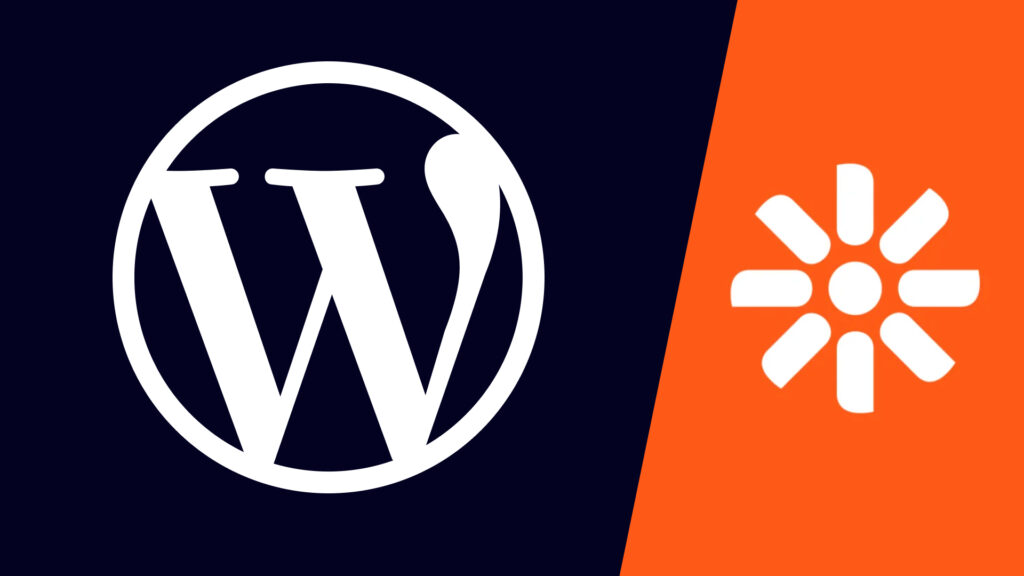
Tom is the Editorial Lead at Itineris, specialising in digital and content strategy. With a deep understanding of all things WordPress, SEO, website optimisation and beyond, he creates content that helps businesses enhance their online presence and drive growth.
Table of Contents:
- What is Kentico?
- What is WordPress?
- Kentico vs WordPress: Difference in Architectures
- Kentico vs WordPress: Implementations
- Kentico vs WordPress: SEO
- Kentico vs WordPress: Total Cost of Ownership
- Kentico vs WordPress: Scalability and Operations
- Kentico vs WordPress: Security
- Kentico vs WordPress: Performance
- Kentico vs WordPress: Maintenance
- Kentico vs WordPress: Flexibility
- Kentico vs WordPress: The Bottom Line
What is Kentico?
Kentico is a digital experience platform (DXP) designed for enterprise businesses.
It combines content management and digital marketing tools in one place. You can use it to build websites, deliver personalised content across channels and manage campaigns, all within a single platform.
Kentico runs on Microsoft technologies. It’s built using C#, ASP.NET and more recently, incorporates React. This makes it a natural fit for organisations already using the Microsoft stack.
It offers both traditional and headless CMS options, making it suitable for a wide range of use cases.
Kentico has two main products: Xperience 13 and Xperience by Kentico. Xperience 13 is their legacy version, which many businesses still use. Xperience by Kentico is the newer SaaS-based version, built for speed, flexibility and cloud-native delivery.
Some of the platform’s main features include marketing automation, personalisation, page building, multichannel delivery and AI-powered content suggestions. There’s also built-in eCommerce functionality, which allows you to create product catalogues, handle payments and manage shopping carts without relying on third-party tools.
Kentico is known for its out-of-the-box functionality and flexibility, but it’s not as widely adopted as some competitors.
It powers over 30,000 websites globally, holding a market share of only around 0.08%.
What is WordPress?
WordPress needs little introduction, being the world’s most popular content management system. It powers over 40% of all websites, including 14% of the top 10,000 by traffic.
It’s known for being user-friendly, flexible and extendable, which are qualities that make it a fit for everything from blogs to enterprise-level digital platforms.
Originally built for publishing, WordPress has evolved into a full-featured CMS capable of handling complex digital needs. It’s open-source, written in PHP and works with MySQL databases. It’s compatible with most web servers, including Apache, NGINX and Microsoft IIS.
What makes WordPress stand out is its modular structure. You can customise functionality through plugins and style your site with themes. There are thousands of both.
Whether you’re building a multilingual eCommerce site or a global news platform, chances are WordPress can support it — either out of the box or through integrations.
WordPress is also SEO-friendly by design. Clean URLs, custom metadata and plugin support for sitemaps and structured data make it a strong choice for content-heavy websites. It also offers REST and GraphQL APIs, so developers can build headless or hybrid experiences if needed.
For enterprise organisations, the WordPress ecosystem extends further with solutions like WordPress VIP. This gives businesses access to secure, scalable infrastructure and expert support, making it a viable alternative to proprietary DXPs.

Kentico vs WordPress: Difference in Architectures
When comparing Kentico and WordPress architectures, it’s helpful to look at how they’re designed to deliver content across multiple channels — especially as more enterprises shift to omnichannel strategies.
Kentico Architecture
Kentico offers a hybrid headless architecture. This means you can use it as a traditional CMS or decouple the front end from the back end for more flexible delivery.
The architecture is split between two main models: Portal Engine and MVC (Model-View-Controller).
Portal Engine is Kentico’s older architecture. It’s easy to use and good for rapid development, but it’s based on ASP.NET Web Forms, which are being phased out. It tightly couples the content and presentation layers, making it harder to adopt modern delivery models.
MVC is Kentico’s modern architecture. It separates the front end from the back end and is built on ASP.NET MVC 5. This makes it easier to deliver content across websites, apps and devices.
It also allows for greater developer control, but comes with added complexity and development overhead.
The two applications, admin and front end, must be maintained separately. This can increase cost and setup time.
Kentico now encourages customers to migrate to its SaaS platform, Xperience by Kentico. This is where hybrid-headless really comes into its own, with built-in support for multichannel delivery, personalisation and AI features. However, many older Kentico implementations are still stuck on Portal Engine and will require a full upgrade or rebuild to move forward.
WordPress Architecture
WordPress offers a more modular approach to architecture.
At its core, it follows a monolithic model where content and presentation are handled together. This makes setup simple and fast.
But WordPress also supports headless and hybrid setups. Through its REST and GraphQL APIs, you can use WordPress as a content repository and deliver content to any front end — be it React, Vue, native apps or something else.
With a hybrid setup, you can mix and match, running standard WordPress themes for blog content and headless APIs for app-like front-end experiences.
Unlike Kentico, which historically required choosing between Portal Engine or MVC, WordPress allows you to evolve your architecture over time. You can start monolithic and scale into hybrid or headless when needed. This flexibility reduces technical debt and gives teams more freedom to adapt as requirements grow.
Architecture: The Bottom Line
In short, Kentico’s architecture is powerful but comes with a steeper learning curve and more reliance on the Microsoft ecosystem.
WordPress offers a more open and flexible architecture that supports both traditional and modern delivery models without locking you into a specific development path.

Kentico vs WordPress: Implementations
Kentico’s architecture is distinctly enterprise-focused, offering a decoupled, two-application setup.
The ASP.NET Core application manages the public-facing site, while the Xperience application serves as the content repository and admin interface. This divided architecture enables flexibility but also increases the technical complexity of implementations.
Routing, data access and rendering are controlled through APIs and controllers, and developers work heavily within the .NET ecosystem using NuGet packages and Visual Studio integrations.
The system is well-suited for organisations already embedded in the Microsoft stack or those requiring strict separation between content management and delivery environments.
On top of this, the architecture is designed to scale across web farm servers, supporting synchronised deployments across high-availability infrastructures. However, this robustness introduces overhead in implementation and maintenance, often requiring specialist development teams and bespoke DevOps pipelines.
By contrast, WordPress offers a more unified implementation experience, but one that doesn’t compromise on flexibility.
Its traditional monolithic structure integrates front-end and back-end into a single interface, reducing operational friction for editorial teams.
For enterprises that need greater separation, headless WordPress provides an alternative — decoupling content and front-end presentation through REST API or GraphQL. This is similar to Kentico, but with a smoother learning curve and a lower development barrier.
In terms of content creation, WordPress’s Gutenberg block editor offers a highly accessible, modular experience.
While Kentico does support a page builder interface, it’s often seen as less intuitive and more rigid than WordPress’s block-based structure.
Gutenberg enables design consistency through reusable components and templates. This allows marketing teams to build and iterate on landing pages without developer involvement.
Implementation: The Bottom Line
Kentico’s implementation model allows enterprises to access sophisticated architecture use cases. Specifically, cases that require Microsoft integration and controlled workflows.
However, WordPress offers an equally enterprise-ready, yet more streamlined and cost-efficient, implementation path. This is especially true when using modern headless architecture alongside Gutenberg’s editorial flexibility.

Kentico vs WordPress: SEO
Both platforms provide a robust foundation for SEO, but they approach optimisation from different angles.
Kentico incorporates some handy SEO features directly into its CMS:
- URL automation and redirects: Developers can define URL structures programmatically, and Kentico supports 301 redirects out of the box.
- AI-generated image alt text: Integration with Azure AI provides automatic alt text suggestions.
- HTML and indexing controls: Users can access clean markup and submit content for reindexing through Google Search Console integrations.
The platform’s tools come with SEO benefits, but many are tied to development workflows or require deeper configuration within the CMS interface. This limits hands-on control for marketers and content editors.
WordPress, on the other hand, empowers teams with editor-first SEO optimisation:
- Various SEO plugins offer real-time content analysis, helping editors adjust titles, metadata and internal links as they write.
- Sitemap generation, schema markup and social meta integration are available through plugins. This often comes with minimal setup.
- Image alt text, permalinks and page-level metadata can be managed natively within the dashboard.
WordPress’s flexibility is particularly beneficial for enterprises running content-heavy, fast-moving campaigns. It gives SEO specialists and marketers the agility to make optimisations without depending too heavily on developers.
SEO: The Bottom Line
Kentico provides solid SEO fundamentals through development-driven controls and automation. This suits enterprise teams with established workflows and technical oversight.
However, WordPress delivers a more agile and marketer-friendly SEO toolkit, with superior extensibility through plugins and native integrations that empower real-time, content-driven optimisation.
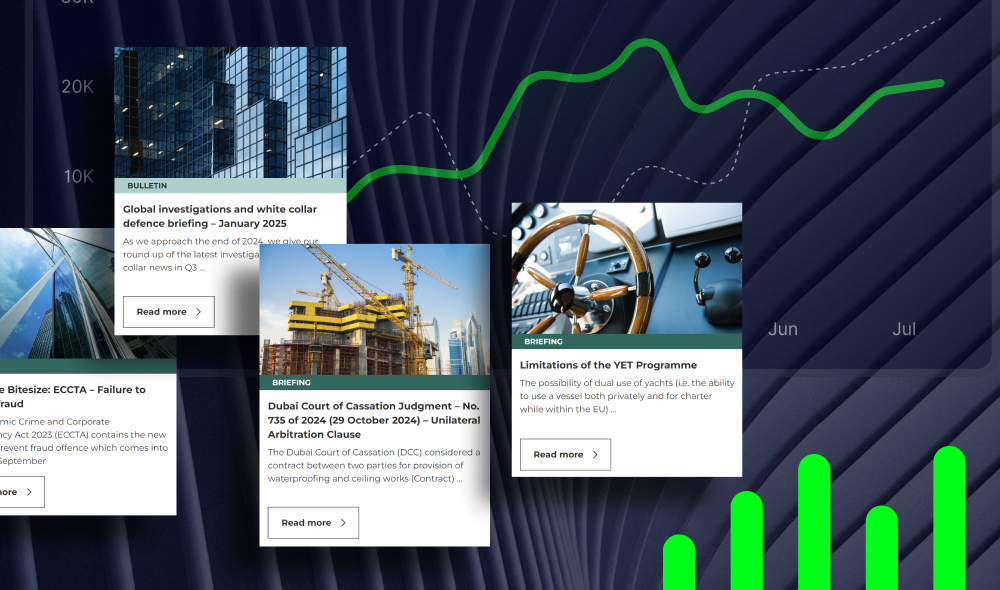
Kentico vs WordPress: Total Cost of Ownership
Total Cost of Ownership (TCO) is a vital factor in choosing a CMS. When evaluating TCO, enterprises must look beyond the initial build costs and consider factors like licensing, upgrades, hosting, support, training and flexibility over time. These areas are often where the biggest costs lie.
Licencing and Upgrades
Kentico’s licencing starts at $23,700/year for enterprises, not including costs associated with future upgrades or feature unlocks.
Moving from Kentico 12 to Xperience 13, for example, can require multiple migration phases, each demanding developer input and potential downtime. As Kentico transitions its product towards a SaaS hybrid model, further re-platforming efforts may be required, potentially increasing technical debt.
In contrast, WordPress is open source with no licensing fees. The core CMS is free, and upgrades are generally automatic and backward-compatible.
Even when using enterprise-level WordPress platforms like WordPress VIP, costs remain predictable and subscription-based, starting much lower depending on usage, traffic and support tiers.
Infrastructure and Maintenance
Kentico can be self-hosted or deployed via cloud infrastructure like Azure or AWS. The costs of this vary depending on redundancy, performance and compliance needs.
Whatever your needs, it’s never cheap. And, you’ve still got to cover internal DevOps or IT teams. Maintenance, backups and monitoring typically require specialist resources.
WordPress’s managed solutions, such as WordPress VIP, offer fully-hosted environments with automated backups, version control, performance optimisation and enterprise-grade SLAs.
These platforms can significantly reduce overhead by absorbing the operational complexity.
Customisation and Flexibility
Both platforms support custom development, but WordPress wins on cost-effectiveness.
WordPress has a vast global talent pool and a rich ecosystem of 50,000+ plugins, which reduces custom build time.
Kentico has a more niche ecosystem and proprietary model. This often necessitates custom coding for features readily available in WordPress via plugins or community-supported integrations.
Enterprises using Kentico also frequently rely on dedicated agency support, which increases the long-term dependency and cost.
Training and Usability
Kentico requires more upfront training for both content managers and developers, especially when transitioning between versions. Notably, the Xperience admin panel can be complex for non-technical users.
In contrast, WordPress offers a more familiar, intuitive interface, which lowers the learning curve and reduces training costs. And being so widely used, editorial and technical staff are more likely to have prior WordPress experience.
Integration Costs
Kentico supports robust integrations via its custom API layer, but implementation can be expensive.
WordPress, by comparison, integrates easily with CRM, marketing, analytics and eCommerce platforms through mature plugins and RESTful APIs. This is often at significantly lower implementation costs.
TCO: The Bottom Line
Kentico’s enterprise licensing and infrastructure model offers solid support but at a steep (and often compounding) cost.
WordPress offers a more transparent and scalable financial model, with minimal licensing costs, broader development support and reduced upgrade complexity. WordPress is certainly the more economical long-term choice for enterprise platforms.
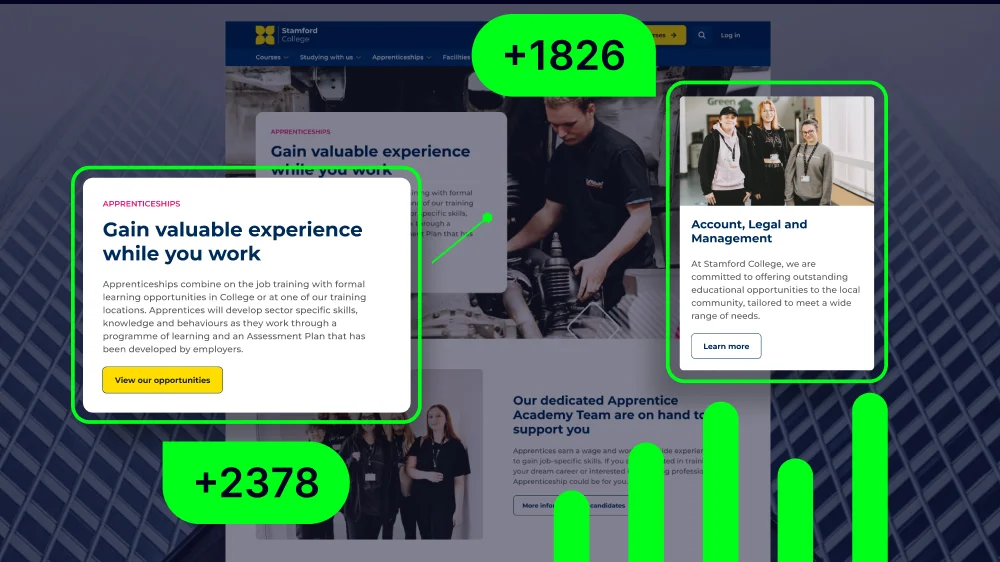
Kentico vs WordPress: Scalability and Operations
Scalability is essential for enterprise platforms, especially those expecting growth, traffic spikes or complex multi-site ecosystems.
Kentico
Kentico, particularly in its Xperience (XbyK) form, is engineered with enterprise scalability in mind.
It leverages ASP.NET and cloud-native infrastructure to support load balancing, horizontal scaling and automated content syncing across environments.
When deployed in a web farm, Kentico handles automatic file and in-memory object synchronisation across instances, offering reliable consistency for large-scale applications.
However, Kentico’s strength here comes with some issues, particularly around version upgrades.
Moving from Kentico Xperience 13 to XbyK often demands significant developer involvement. Kentico categorises migration complexity from low to high, and for customised or mature setups, many elements (like media libraries, contact data and workflows) fall into the “high” bracket, which requires full reimplementation.
WordPress
WordPress, while not originally designed for the enterprise, has matured significantly — particularly with WordPress VIP and similar enterprise-grade managed hosting platforms.
Organisations such as NASA, The White House and The New Yorker all rely on WordPress’s ability to scale at a global level.
Scalability in WordPress is largely infrastructure-driven. With a well-architected enterprise hosting environment (e.g. VIP or Kinsta), combined with tools like CDNs, caching layers and query optimisation, WordPress scales smoothly under pressure.
Plus, upgrades in WordPress are frictionless. Core software supports automatic updates, and most enhancements can be adopted incrementally, without full-stack reengineering.
This makes WordPress far more operationally agile in fast-moving enterprise environments.
Scalability and Operations: The Bottom Line
Kentico has built-in scalability suited to .NET-heavy enterprise architectures, but it comes with serious operational complexity.
WordPress achieves comparable scale with less friction and more flexibility — particularly when paired with premium hosting infrastructure.

Kentico vs WordPress: Security
Security is non-negotiable at the enterprise level. So, having a secure CMS covering everything from infrastructure threats to code integrity and compliance is crucial.
Kentico
Kentico offers strong security capabilities out of the box: access control, two-factor authentication (2FA), IP restrictions and role-based permissions.
It adheres to best practices in secure development and mitigates the Open Web Application Security Project (OWASP) Top 10 vulnerabilities natively.
Its closed-source ASP.NET environment also reduces exposure to the plugin-related risks seen in more open ecosystems.
However, the complexity of Kentico’s customisation introduces potential attack surfaces — especially when teams extend functionality through bespoke development.
Security hotfixes are available only while a version is officially supported (e.g. support for Xperience 13 ends in 2026), so staying secure may require a full migration, not just a patch.
WordPress
WordPress has matured immensely in security, especially for enterprise use cases.
Managed platforms like WordPress VIP are FedRAMP-authorised, highlighting their use in government-grade secure environments. The platform benefits from frequent updates and a large open-source community that quickly identifies and resolves vulnerabilities.
Since WordPress 3.7, core software has included automatic security updates. Modern WordPress also supports 2FA, SSO and hardened file permissions. Plus, most enterprise installations incorporate application firewalls, malware scanning and regular penetration testing.
Security risks in WordPress often come from poor-quality plugins or outdated themes. But, with proper governance, these are entirely manageable.
The ecosystem now includes enterprise-grade plugin auditing, code scanning (via tools) and continuous monitoring.
Security: The Bottom Line
Both CMS options offer enterprise-level security.
Kentico benefits from a contained architecture, but WordPress offers greater responsiveness to emerging threats and compliance requirements. WordPress security is especially strong when deployed on a trusted enterprise hosting stack.

Kentico vs WordPress: Performance
Website performance directly impacts user experience, conversions and SEO. Enterprises need consistent, fast load times under any conditions.
Kentico
Kentico’s ASP.NET base provides strong performance benchmarks, especially in Microsoft stack environments.
It features robust caching (including partial caching and output caching), web farm synchronisation and scalable deployment options across cloud platforms like Azure.
However, the platform’s real-world performance depends heavily on proper configuration.
Kentico doesn’t provide native infrastructure, so your implementation and hosting strategy plays an enormous role in your digital performance. Also, with complex setups, performance tuning can require dedicated .NET expertise.
WordPress
With WordPress, performance is equally infrastructure-dependent, but it’s easier to optimise thanks to the ecosystem’s breadth.
Enterprise hosts like WordPress VIP deliver built-in CDN integration, advanced caching strategies and edge optimisation. This allows for ultra-fast experiences at scale.
WordPress also allows database optimisation, lazy loading, asset minification and real-time performance monitoring with third-party tools. Combined with a headless architecture or static front-end frameworks (like Next.js), WordPress can outperform traditional CMSs in load speed and responsiveness.
Performance: The Bottom Line
Both platforms can deliver excellent performance, but WordPress offers faster, more flexible performance optimisation pathways. This is particularly true for agile marketing teams who want speed without the dev bottlenecks.

Kentico vs WordPress: Maintenance
Ease of maintenance determines how quickly your team can evolve the website, deploy changes and stay secure. This is an especially important consideration for long-term sustainability.
Kentico
Kentico updates are centralised and delivered as “hotfixes,” but maintaining a customised Kentico instance is often resource-intensive.
Version upgrades frequently involve database migrations, reimplementation of custom code and QA cycles. As support windows expire (e.g. Kentico Xperience 13 in 2026), maintaining compliance and functionality requires migrating to newer Kentico versions. Doing so can mean a full rebuild for advanced implementations.
The trade-off here is stability. Updates are predictable and vetted by the vendor, but agility suffers.
WordPress
WordPress excels in maintainability.
Most core, plugin, and theme updates can be applied with minimal disruption directly through the admin interface. Automatic updates for core, plugin compatibility checks and rollback functionality reduce the risk of downtime.
Yes, complex WordPress setups require ongoing attention, especially those with bespoke plugins or headless integrations. But the ecosystem of developers, documentation and support makes routine maintenance more accessible and cost-effective than in a closed proprietary CMS.
Maintenance: The Bottom Line
Kentico offers a slower, vendor-managed update path that’s safe but rigid.
WordPress enables continuous iteration and lighter maintenance overhead. It’s especially suited to enterprises operating in agile or content-heavy environments.

Kentico vs WordPress: Flexibility
In the enterprise context, flexibility isn’t just about design or plugins. It’s about aligning the CMS with workflows, integrations and future growth.
Kentico
Kentico offers a high level of flexibility, especially within Microsoft ecosystems.
It supports rule-based personalisation, AI-driven content suggestions, marketing automation and structured content types. Much of this is available out-of-the-box, which is ideal for organisations that want a single vendor solution.
However, extending or integrating Kentico beyond its ecosystem can be challenging. It requires experienced ASP.NET developers and often involves licensing considerations.
Customisation is powerful, but not necessarily nimble.
WordPress
WordPress thrives on flexibility.
The open-source nature of the platform, combined with REST API support, GraphQL and growing headless capabilities, makes it ideal for multi-channel publishing, composable architecture and third-party integrations.
While WordPress doesn’t include personalisation features natively, it supports an enormous range of third-party solutions. The upside of this is you’re not locked into any single method. Instead, you choose the tools that fit your team and stack.
Editorial flexibility is another strength of WordPress. Gutenberg (WordPress’s block editor) empowers non-technical users to build content-rich pages without dev intervention.
For enterprises, this means faster campaigns, better autonomy and fewer bottlenecks.
Flexibility: The Bottom Line
Kentico is flexible within its framework. WordPress is flexible by design — allowing enterprises to build, scale and iterate in the ways that suit them best.
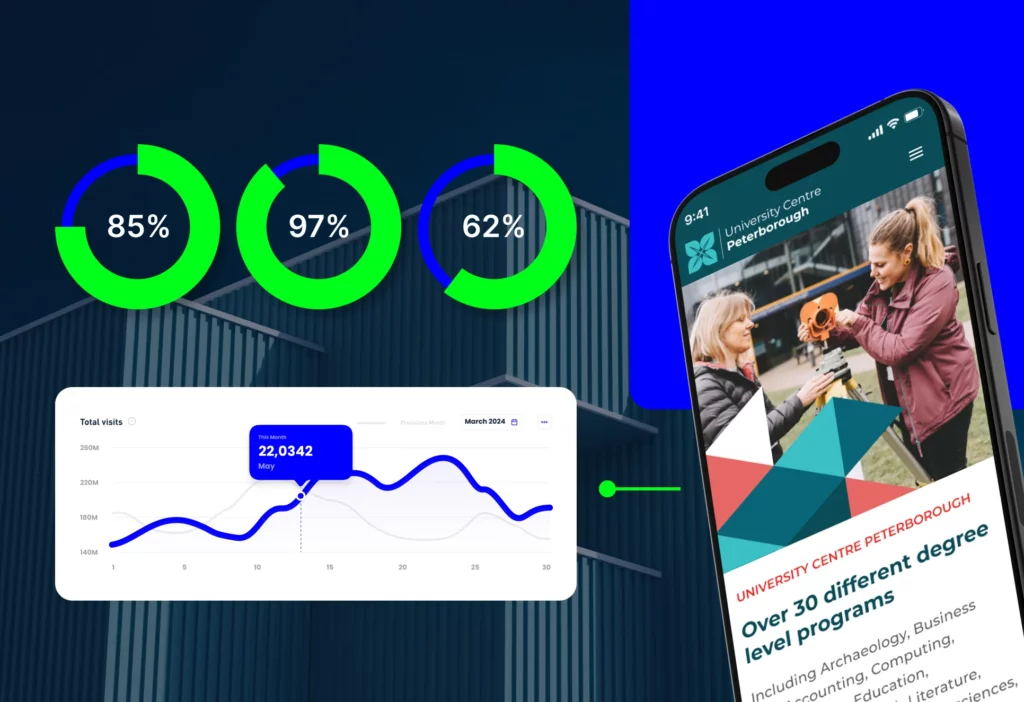
Kentico vs WordPress: The Bottom Line
Kentico and WordPress are both capable enterprise CMS platforms, but they’re built for very different kinds of digital operations.
Kentico offers strong out-of-the-box features, particularly for personalisation and enterprise integration. But, the platform comes with complexity, heavier upgrade paths and higher ongoing maintenance demands.
WordPress, especially when paired with a managed enterprise platform like WordPress VIP, offers far greater flexibility, easier updates, stronger community support and proven scalability.
It powers some of the world’s most demanding websites, and for good reason. If you’re looking for a future-ready CMS that won’t box you in, WordPress is the smart, strategic choice.
Ready to explore what WordPress VIP could do for your enterprise website?
At Itineris, we’re one of only six approved WordPress VIP agency partners in the UK, and have extensive experience in enterprise WordPress development. Get in touch to get started.


